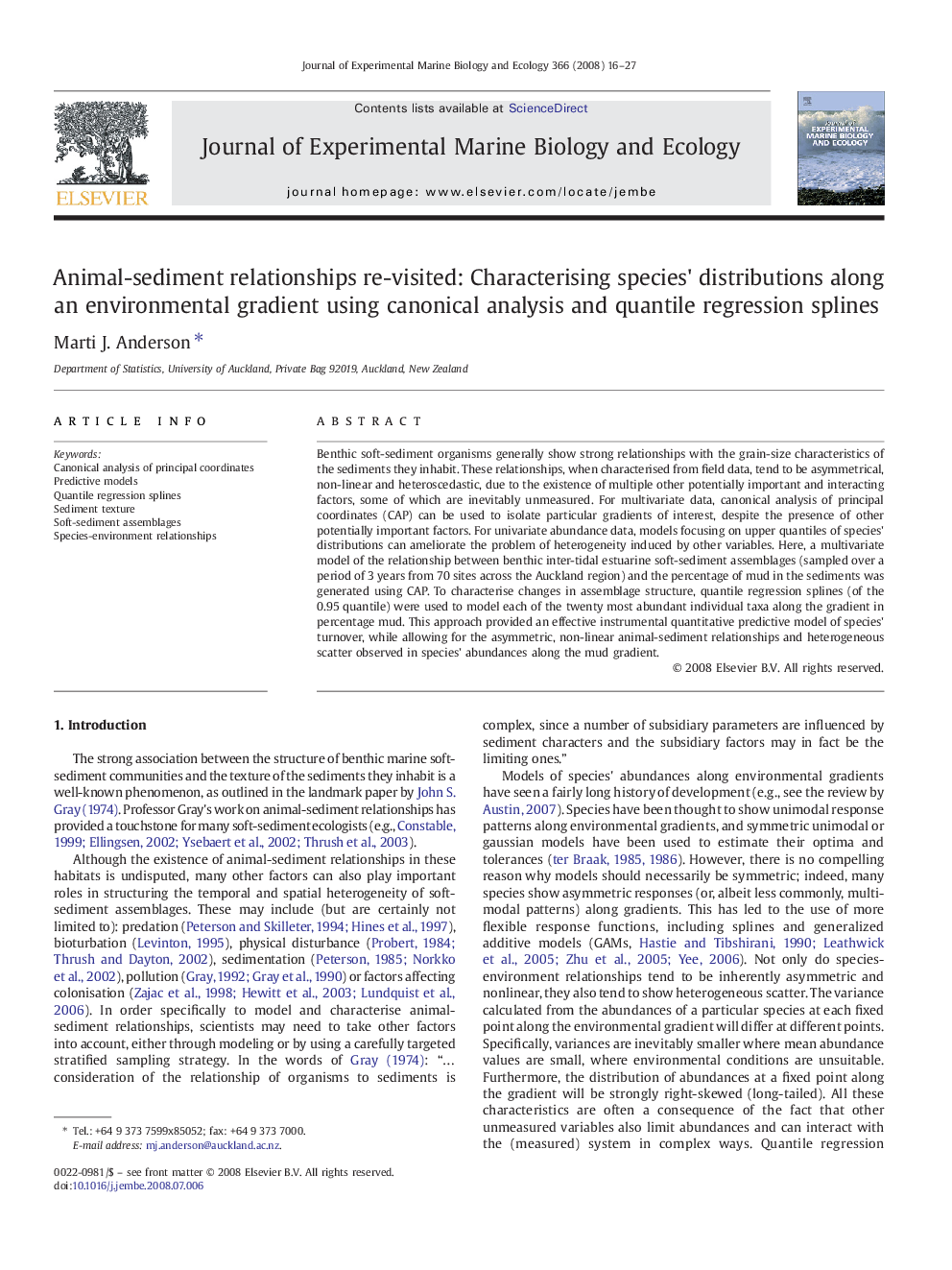| کد مقاله | کد نشریه | سال انتشار | مقاله انگلیسی | نسخه تمام متن |
|---|---|---|---|---|
| 4397187 | 1618483 | 2008 | 12 صفحه PDF | دانلود رایگان |
عنوان انگلیسی مقاله ISI
Animal-sediment relationships re-visited: Characterising species' distributions along an environmental gradient using canonical analysis and quantile regression splines
دانلود مقاله + سفارش ترجمه
دانلود مقاله ISI انگلیسی
رایگان برای ایرانیان
کلمات کلیدی
موضوعات مرتبط
علوم زیستی و بیوفناوری
علوم کشاورزی و بیولوژیک
علوم آبزیان
پیش نمایش صفحه اول مقاله

چکیده انگلیسی
Benthic soft-sediment organisms generally show strong relationships with the grain-size characteristics of the sediments they inhabit. These relationships, when characterised from field data, tend to be asymmetrical, non-linear and heteroscedastic, due to the existence of multiple other potentially important and interacting factors, some of which are inevitably unmeasured. For multivariate data, canonical analysis of principal coordinates (CAP) can be used to isolate particular gradients of interest, despite the presence of other potentially important factors. For univariate abundance data, models focusing on upper quantiles of species' distributions can ameliorate the problem of heterogeneity induced by other variables. Here, a multivariate model of the relationship between benthic inter-tidal estuarine soft-sediment assemblages (sampled over a period of 3Â years from 70 sites across the Auckland region) and the percentage of mud in the sediments was generated using CAP. To characterise changes in assemblage structure, quantile regression splines (of the 0.95Â quantile) were used to model each of the twenty most abundant individual taxa along the gradient in percentage mud. This approach provided an effective instrumental quantitative predictive model of species' turnover, while allowing for the asymmetric, non-linear animal-sediment relationships and heterogeneous scatter observed in species' abundances along the mud gradient.
ناشر
Database: Elsevier - ScienceDirect (ساینس دایرکت)
Journal: Journal of Experimental Marine Biology and Ecology - Volume 366, Issues 1â2, 15 November 2008, Pages 16-27
Journal: Journal of Experimental Marine Biology and Ecology - Volume 366, Issues 1â2, 15 November 2008, Pages 16-27
نویسندگان
Marti J. Anderson,